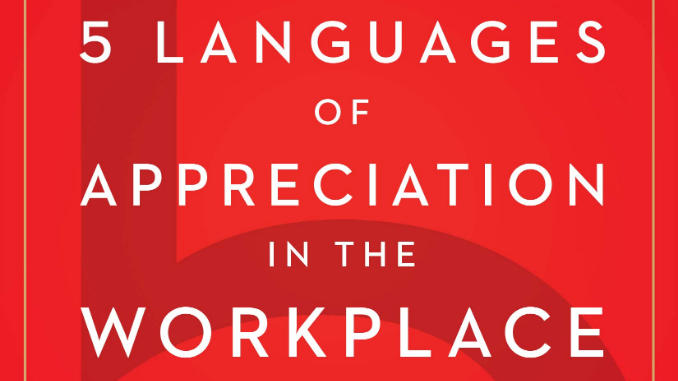
Also by this author: Holding on to Love After You've Lost a Baby: The 5 Love Languages for Grieving Parents, The 5 Apology Languages: The Secret to Healthy Relationships, Loving Adopted Children Well: A 5 Love Languages® Approach, Loving Adopted Children Well: A 5 Love Languages® Approach
Series: The Five Love Languages #5
Published by Northfield Publishing on January 1, 2019
Genres: Non-Fiction, Christian Life, Work
Buy on Amazon
Goodreads

This book will give you the tools to improve staff morale, create a more positive workplace, and increase employee engagement. How? By teaching you to effectively communicate authentic appreciation and encouragement to employees, co-workers, and leaders. Most relational problems in organizations flow from this question: do people feel appreciated? This book will help you answer “Yes!”
A bestseller—having sold over 300,000 copies and translated into 16 languages—this book has proven to be effective and valuable in diverse settings. Its principles about human behavior have helped businesses, non-profits, hospitals, schools, government agencies, and organizations with remote workers.
Twenty years after Dr. Gary Chapman published The Five Love Languages, building on the success of expanding the series to singles, teens, and children, Dr. Chapman teamed up with Dr. Paul White (author of A Vibrant Workplace) to adapt the love languages model for the workplace environment.
Like most of the Love Languages books, the first half of the book is a step-by-step overview of the love languages. If you’re already familiar with the concept, this part might seem a bit tedious. Feel free to skim (or, as I did with the audiobook, put it on double speed), but take time to read through the vignettes and case studies.
I was most curious to see how they would adapt the love language of physical touch to a workplace environment. That type of affirmation is so nuanced and varies in levels of appropriateness based on generational, cultural, ethnic, and workplace environment differences. Fortunately, Chapman and White handle this with grace and sensitivity, spending the majority of the chapter teaching readers how to be cautious with this love language.
Another important chapter explains the difference between recognition and appreciation. While most people want to be appreciated, recognizing them with formal awards or ceremonies usually does more harm than good. Chapman and White tell stories of workers who actively tried to get as close as possible to certain thresholds with going over to avoid any type of public recognition.
Understanding an employee’s love language—let’s call it what it is—is integral to their success within the company and, ultimately, growing them as a person. Reading this book will help leaders empower their workers, which will, in turn, lead to greater job satisfaction and long-term productivity.
There is some concern that businesses will adopt these policies in a fake and contrived way in an attempt to manipulate this productivity or company loyalty. But the love languages are difficult to fake. Even if you begin with insincere motives, you soon find that you’re either ineffective or the motives become genuine.
Chapman and White also handle some common relational issues within the workplace—multiple managers, remote workers, poor workers, generational differences, and so forth. More so than any of the other spin-offs of the original Love Languages book, The Five Appreciation Languages has the most original content and dives the deepest. As a coach and a pastor, I felt it relevant to both my professions, even though they are not traditional managerial positions. This is a must-read for any business, particularly small businesses.
